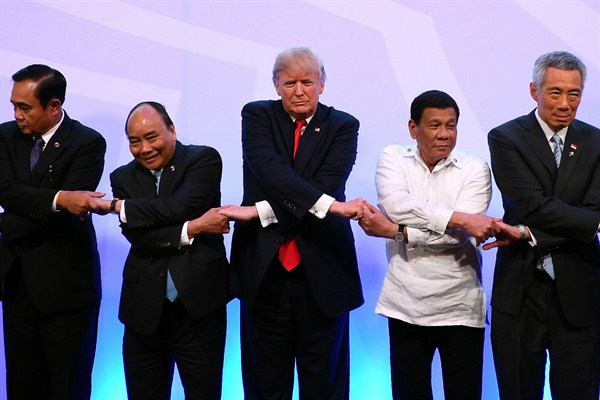Even as Donald Trump wraps up his first trip to Asia as U.S. president this week, deep uncertainty remains over what the broad contours of his administration’s Asia policy will actually end up being. Though U.S.-Singapore ties themselves are already on a solid footing and the city-state remains a key U.S. strategic partner, Singaporean Prime Minister Lee Hsien Loong’s visit to Washington last month, ahead of Trump’s Asia tour, reinforced the point that this important relationship is not immune to that uncertainty, with both sides trying to manage their relations in the context of their domestic and foreign policies.
Both the United States and Singapore have long recognized the value of closer ties between them. Through the decades, the United States has been a key economic and security partner for Singapore, while the city-state has emerged as not just a strong U.S. bilateral partner, but a regional anchor for an American presence as well as an active contributor to Washington’s global priorities. During the Obama administration, Singapore played a key role in advancing the U.S. rebalance to the Asia-Pacific, from hosting U.S. ships and aircraft to jointly providing technical assistance to other Southeast Asian states. Just last year Lee paid a state visit to Washington to commemorate the 50th anniversary of the establishment of bilateral ties.
Lee’s return to Washington just over a year later for an official visit finds the bilateral relationship itself still sound. Economically, unlike the previous three visiting Southeast Asian leaders—from Vietnam, Malaysia and Thailand—who had summit meetings with Trump, Singapore did not make the president’s so-called trade hit list. In fact, both sides had expanded their commercial cooperation previously in areas like e-commerce, smart cities and financial technology. And they looked to make further progress this time around. Beyond the purchase of 39 Boeing aircraft by Singapore Airlines, which allowed Trump to tout the creation of 70,000 new U.S. jobs, both sides tried to reach agreement on areas like bilateral tax issues, though work still remains to be done.

